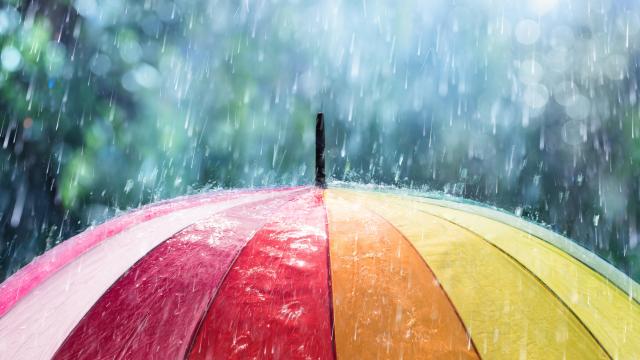As the winter week begins, you may find yourself checking the weather forecast for the next few days — especially if your plans involve doing anything outdoors.
Maybe you’re getting lucky, and only see sunshine coming your way. But if you see the little raincloud indicating that you’ll be dealing with some precipitation, you may not pay attention to the rest of forecast. After all, rain is rain, right?
Well, not exactly. When it comes to your weather forecast, “rain” and “showers” are two different things. Here’s what to know.
The difference between ‘rain’ and ‘showers’
Basically, it comes down to the intensity and duration of the rainfall, according to the Farmers’ Almanac:
Rain
- Falls steadily
- Lasts for hours or days
- Typically widespread throughout your city or town
Showers
- Lighter rainfall
- Shorter duration
- Can start and stop over a period of time
- Tends to be more scattered across an area
- Tip: Think of an actual (bathing) shower, which doesn’t last for hours
How to get clues from other weather conditions
Weather forecasts can helpful, but they can also be wrong. And so sometimes, it can be more useful to look to the clouds for information, the Farmers’ Almanac notes.
For example, flat, grey (stratus) clouds tend to mean that heavier, longer-lasting rain is in your near future. Meanwhile, puffy (cumulus or cumulonimbus) clouds are often a sign that you’re in for some showers, rather than steady rainfall.
Other than the clouds, you can also get clues from the weather conditions in your area. For instance, if a cold or warm front passes through your state, there’s a good chance that rain won’t be far behind.
Then, there are those balmy summer days when you can almost feel that precipitation — and perhaps some thunder and lightning — are in store for you later on.
In that case, the Farmers’ Almanac says that those conditions may result in late afternoon showers: “the heat warms pockets of air which then rise up high into the atmosphere, cooling as they journey upward and triggering water vapour within them to condense and eventually fall out of the sky as raindrops.”

Leave a Reply
You must be logged in to post a comment.